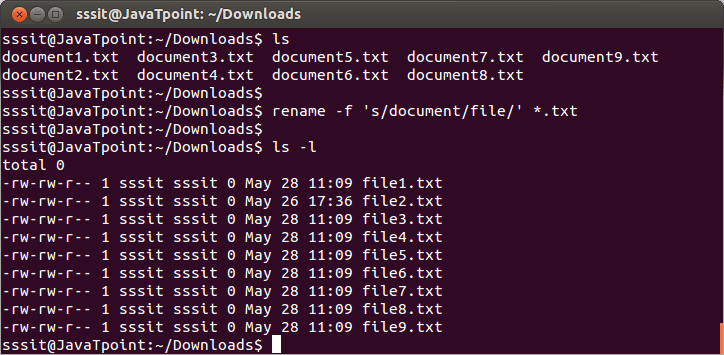

-E Statement: code to act on files name, as -e but terminated by ‘ ’. If no -e, the first argument is used as code. May be repeated to build up code (like “perl -e”). e Expression: code to act on files name. V -version Version: show version number. h -help Help: print SYNOPSIS and OPTIONS. f -force Overwrite: allow existing files to be over-written. n -nono No action: print names of files to be renamed, but don’t rename. Options -v -verbose Verbose: print names of files successfully renamed. If no filenames are given on the command line, filenames will be read via standard input. If a given filename is not modified by the expression, it will not be renamed. The perlexpr argument is a Perl expression which is expected to modify the $_ string in Perl for at least some of the filenames specified. This command is slightly more advanced than mv because it requires the knowledge of, or at least a basic familiarity with regular expressions, “rename” renames the filenames (multiple files) supplied according to the rule specified as the first argument. Rename multiple files in Linux using ‘rename’ If you want to know more detailed information about ‘mv’ just type: $ man mv at your terminal. –backup options none, off never make backups (even if –backup is given) numbered, t make numbered backups existing, nil numbered if numbered backups exist, simple otherwise simple, never always make simple backups


Options List –backup make a backup of each existing destination file -f –force do not prompt before overwriting -i –interactive prompt before overwrite -n do not overwrite an existing file -u move only when the SOURCE file is newer than the destination file or when the destination file is missing


 0 kommentar(er)
0 kommentar(er)
